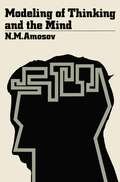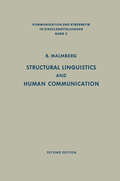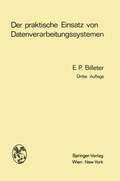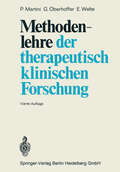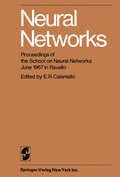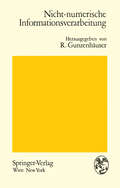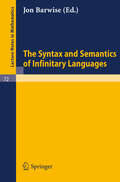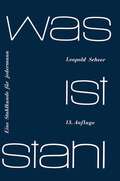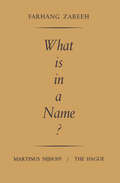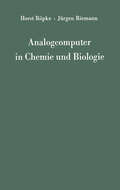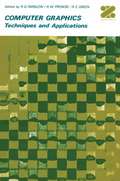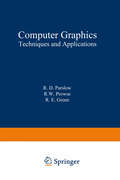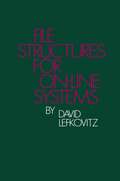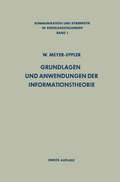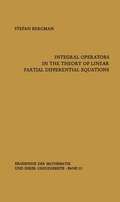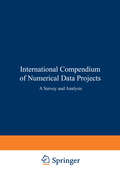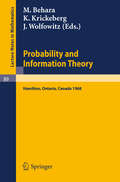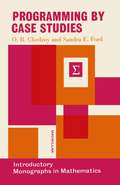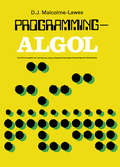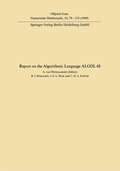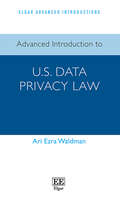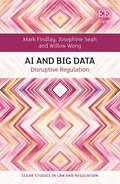- Table View
- List View
Structural Linguistics and Human Communication: An Introduction into the Mechanism of Language and the Methodology of Linguistics (Communication and Cybernetics #2)
by Bertil MalmbergThe point of departure of this general survey of modern structural linguistics is the place of language in human relations. Linguistics will consequently be understood as a science of communication. My book is not intended as an elementary handbook. The readers are supposed to be in the first place advanced students of linguistics and phonetics and of neighbouring fields where a real awareness of linguistic methods and problems is essential (such as psychology, phoniatrics, speech therapy, language teaching, communication engineering). The book may, however, be of some value also for the general reader who is interested in language, in language learning, or in communication processes. It might finally serve as an introduction to structural theories and practice for those linguists of traditional orientation who would like to make contact with the new trends in the study of language. It is self-evident that, under such circumstances, any reader will find certain chapters in this book rather complicated, others irritatingly elementary. This is, however, unavoidable in a work whose aim is to cover a vast field of knowledge and to offer the reader a synthesis of what appears at first sight to be widely disparate facts and phenomena. Many of the facts brought together here may, regarded superficially, seem to have few or no mutual connections. They can, nevertheless, be combined into a wide humanistic and scientific unity within which numerous lines of relationship bind together physical and psychic, individual and social phenomena.
Der praktische Einsatz von Datenverarbeitungssystemen: Kybernetische und betriebswirtschaftliche Aspekte
by Ernst P. BilleterThe European Computer Users Handbook 1968/69: Pergamon Computer Data Series
by Sam StuartThe European Computer Users Handbook 1968/69, Sixth Edition is a handbook of computers and computer peripherals which could be used in Europe. Details of computers and peripheral devices, including analog computers, calculators, and data transmission equipment, are presented. This book is organized into 10 sections and begins by giving information on digital computers that could be used in Europe based on recommendations by Computer Consultants Limited. Comments on the particular computer manufacturer concerned are included and the particular item of equipment is described. Digital computers, electronic calculators, analog computers, peripheral equipment, and data transmission equipment available in Europe are then listed. The names and addresses of computer manufacturers and selling organizations concerned with computers used in Europe are also provided. Two tables are given: one for computer installations by number, import value, and home built value in sixteen European countries, and another for computer installations in the United States. This monograph will be a valuable resource for both computer users and manufacturers.
Neural Networks: Proceedings of the School on Neural Networks June 1967 in Ravello
by E. R. CaianielloSciences may be nowadays grouped into three classes, having as their subjects of study respectively Matter, Life and Intelligence. That "Intelligence" may be studied in a quantitative manner is a discovery of our age, not less significant in many ways than the 17th ceiltury realization that celestial phenomena are of one and the same nature as terrestrial and all other physical accidents. As the latter was accomplished through and accompanied by a major revolution in philosophy and method, so is now the scientific investigation of intelligent phenomena - although harely begun - already causing an unprecedented revolution in all our previous conceptions as mind and machine, society and organization. What electronic com puters have already accomplished in disclosing perspectives to sciences and imposing new approached to management is but a negligible change, if compared to those yet in store, which will closely follow the understanding of the many as yet unknown functional principles which make nervous systems act and react the way they do. The study of Neural Networks is the key point in the systematic quantitative investigation of such phenomena. With patience and humility, neuroanatomists and physiologists try to connect structure with function in systems of neurons which are "simple" enough to be studied with the extant techniques, either because of the paucity of their elements or because of the high degree of symmetry these possess (e. g.
Nicht-numerische Informationsverarbeitung: Beiträge zur Behandlung nicht-numerischer Probleme mit Hilfe von Digitalrechenanlagen
by R. GunzenhäuserDie nicht-numerische Informationsverarbeitung mit Hilfe von Rechen automaten begann in den frühen fünfziger Jahren. 1950 befaßte sich SHANNON mit Schachprogrammen, 1952 schrieb RUTISHAUSER seine bahnbrechende Arbeit über automatische Rechenplanfertigung und begründete damit die Entwicklung der formalen Sprachen. Etwa um die gleiche Zeit veröffentlichte D. H. LEHMER, angeregt durch die Bedürfnisse der Kernphysiker, die bis jetzt gebräuchlichste Methode zur Erzeugung von Zufallszahlen auf Rechenautomaten. Damit standen Zufallszahlen auch für nicht-numerische Anwendungen zur Verfügung. 1953 wurde die Sprache FORTRAN publiziert, 1960 die Sprache ALGOL. Im gleichen Jahr ließ H. WANG 220 Sätze aus den Principia mathematica in 3 Minuten von einem Rechenautomaten beweisen, 196:3 entstanden die ersten Computographien von }( NAKE. Die Anregung, das rasch wachsende Gebiet in einer deutschen Buchveröffent lichung darzustellen, geht auf Herrn Direktor Dr. W. SCHWABL vom Springer Verlag Wien zurück. Bald zeigte sich hierbei, daß ein einzelner Autor nicht imstande sein würde, das Gebiet in seiner ganzen Vielfalt darzustellen, und zwar selbst dann nicht, wenn die rein kommerzielle nicht-numerische Datenverarbeitung ausgeklammert würde. Damit entstand der Gedanke, eine Arbeitsgemeinschaft von Autoren ins Leben zu rufen, die jeweils eine zusammenfassende Darstellung über ihr eigenes Arbeitsgebiet geben sollten.
Computer Graphics: Techniques and Applications
by Robert D. ParslowAbout four or five years ago one began to hear about the enormous interest being taken in on-line consoles and displays. Nothing much was done with them, but computer men felt that this was the way computing ought to go: one might dispense with cards, and overcome many of the problems of man-machine communication. It quickly appeared that, as with computers, there had been a great under estimation of the amount of work involved, of the difficulties of programming, and of the cost. So it began to emerge that graphics was not the ultimate answer, in spite of superb demonstrations where one might watch a square being converted into a cube and then rotated. But my mind goes back to 1951 and the first computers. There, there were demonstrations of arithmetic speed and storage facility; but not much idea of actual use. However, we now understand how to use computers, and in the last year or two, significant developments in the field of graphics have led to genuine applications, and economic benefits. The equipment is still expensive, but it is becoming cheaper, more uses are being found, and f believe that we are just at the stage when the subject is gaining momentum, to become, like computers, a field of immense importance.
File Structures for On-Line Systems (PDF)
by David LefkovitzIn June, 1967, The Professional Development Seminars of the Association for Computing Machinery offered a one-day course on File Structures for On-Line Systems to its membership, and to the data processing community at large. These seminars were given twenty-four times throughout the United States during 1967 and 1968, and it was the continued and widespread interest in this subject that influenced the author to produce this book. T
Grundlagen und Anwendungen der Informationstheorie (Communication and Cybernetics #1)
by Werner Meyer-EpplerIntegral Operators in the Theory of Linear Partial Differential Equations (Ergebnisse der Mathematik und Ihrer Grenzgebiete. 1. Folge #N. F., 23)
by Stefan BergmanInternational Compendium of Numerical Data Projects: A Survey and Analysis
by Codata (The CODATA (The Committee on Data for Science and Technology ofthe International Council of Scientific Unions)At the time of its establishment in 1966, by the International Council of Scientific Unions (ICSU), the Committee on Data for Science and Technol ogy (CODATA) was given the basic mission of promoting and encouraging, on a worldwide basis, the production and distribution of compendia and of collections of critically selected numerical data on substances other forms of interest and importance to science and technology. To accomplish this aim, the following tasks were assigned to CODATA: (1) To ascertain, on a worldwide basis, what work on compilation of numerical data is being carried on in each country and under each union, and from this information, to prepare and distribute a Directory or Com pendium of the Data-Compiling Projects and Related Publications of the World; (2) To achieve coordination of existing programs and to recommend new programs; (3) To encourage, from all appropriate sources, financial support for work on compilation; (4) To encourage the use of internationally approved symbols, units, constants, terminology, and nomenclature; (5) To encourage and coordinate research on new methods for preparing and disseminating data for science and technology. In its first two years of operation, 1966 to 1968, in Washington, D. c. , U. S. A. , CODATA fortunately had as its Director Dr. GUY WADDINGTON, who was also Director of the Office of Critical Tables of the National Research Council (NRC), U. S. A. Dr.
Probability and Information Theory: Proceedings of the International Symposium at McMaster University, Canada, April, 1968 (Lecture Notes in Mathematics #89)
by M. Behara K. Krickeberg J. WolfowitzProgramming by Case Studies: An Algol Primer (Introduction Monographs In Mathematics Ser.)
by O.B. Chedzoy Sandra Elizabeth FordProgramming—ALGOL
by D. J. Malcolme-LawesProgramming—ALGOL is an instructional book on how to write programs using the Algol language. The book starts with an introduction to computers. The Algol language, which runs on instructions typed or punched on strips of paper by the flexowriter, is explained. The text also compares the instructions used in Algol with words in the English language. The command instructions, calculation of numbers, and printing the output are discussed. After a brief introduction into what a program is, the book gives other commands to be added and improve the program. A sample program for repeating calculations is shown with different variables inputted to the program, and then arranging these for the output. The text then introduces the label and the block parts of the program, especially in procedures when several similar sets of commands are required. After the Algol syntax is explained, the different techniques used in programming are considered. In getting a problem into a form and making translation to Algol easier, the flow diagram is introduced. The process of actually running the program by compiling it, using data and program tapes, then begins. The text makes for interesting reading for computer programming instructors, students of introductory programing, and for readers who are interested in the history of computer programming.
Report of Algorithmic Language ALGOL 68 (Handbook for Automatic Computation #1)
by Adriaan van WijngaardenAdvanced Introduction to U.S. Data Privacy Law (Elgar Advanced Introductions series)
by Ari E. WaldmanElgar Advanced Introductions are stimulating and thoughtful introductions to major fields in the social sciences, business and law, expertly written by the world’s leading scholars. Designed to be accessible yet rigorous, they offer concise and lucid surveys of the substantive and policy issues associated with discrete subject areas.This timely Advanced Introduction traces the evolution of consumer data privacy laws in the US through a historical lens, and then sets out the current state of play. Waldman describes how privacy laws benefit corporate interests, and highlights the deficiencies of the present approach to the surveillance economy. In looking to the future, the author advocates a radical new way of thinking about the goals and tools of privacy law and provides a roadmap for avoiding privacy nihilism by rejuvenating public governance and protecting privacy in the digital age.Key Features:Concise and accessible approach to a fast-changing areaNovel conceptualisation of first, second, and third waves of privacy lawIn-depth critique of current and historic privacy law, challenging traditional literatureFocuses on practical ways to address.– deficiencies of current lawsThe Advanced Introduction to U.S. Data Privacy Law will be an invaluable resource for students and scholars of privacy, as well as those in information, media and technology law. It will also be an essential guide for policy-makers and privacy lawyers seeking to understand the past, present, and future of data privacy.
AI and Big Data: Disruptive Regulation (Elgar Studies in Law and Regulation)
by Mark Findlay Josephine Seah Willow WongThis provocative and timely book identifies and disrupts the conventional regulation and governance discourses concerning AI and big data. It suggests that, instead of being used as tools for exclusionist commercial markets, AI and big data can be employed in governing digital transformation for social good. Analysing the ways in which global technology companies have colonised data access, the book reveals how trust, ethics, and digital self-determination can be reconsidered and engaged to promote the interests of marginalised stakeholders in data arrangement. Chapters examine the regulation of labour engagement in digital economies, the landscape of AI ethics, and a multitude of questions regarding participation, costs, and sustainability. Presenting several informative case studies, the book challenges some of the accepted qualifiers of frontier tech and data use and proposes innovative ways of actioning the more conventional regulatory components of big data. Scholars and students in information and media law, regulation and governance, and law and politics will find this book to be critical reading. It will also be of interest to policymakers and the AI and data science community.
Alfredo Roces: Digital Paintings
Alfredo Roces: Digital Paintings features the digital art creation of a polymathic Filipino artist. Though formally trained in the traditional school of fine arts—where in the mid-fifties, the artist took up drawing classes with German Expressionist and Dadaist, George Grosz at the Art Students League of New York—Roces welcomed with gusto the offer of new technologies for his artmaking. The artist’s encounter with “Photoshop” in 2004 would eventually set the stage for his ongoing adventures with digital artmaking—when in 2011, nearing eighty years of age, he discovered the Big Apple and found his Eden with “Brushes” (and later on, “Procreate”) in iPad. The book presents a selection of more than a hundred of Roces’s iPad drawings in various genres—portrait, still life, human figure, and abstract—and shows to full effect the artist’s zest for life. The book is prologued with an interview with the editor, David Jonathan Bayot, in which Roces tells of a life so far and speaks of his dreams for the tomorrows ahead. A prefatory interview is complemented by the artist’s own account of his “adventures with digital art.” In the words of Tina Colayco, President of the Metropolitan Museum of Manila: "There is much to be admired with Alfredo Roces who at 90 remains an authentic and authoritative persona in Philippine art and culture. The book captures the essence of Roces as a Filipino artist, the zeitgeist of so many decades, and a continuing passion to create art. It brings to the fore the journey of the gentleman-artist described in the epigraph to the book as ‘sitting in the Row of a morning’.”
The Architecture of Open Source Applications: Elegance, Evolution, and a Few Fearless Hacks
by Amy Brown Greg WilsonArchitects look at thousands of buildings during their training, and study critiques of those buildings written by masters. In contrast, most software developers only ever get to know a handful of large programs well—usually programs they wrote themselves—and never study the great programs of history. As a result, they repeat one another's mistakes rather than building on one another's successes. Our goal is to change that. In these two books, the authors of four dozen open source applications explain how their software is structured, and why. What are each program's major components? How do they interact? And what did their builders learn during their development? In answering these questions, the contributors to these books provide unique insights into how they think. If you are a junior developer, and want to learn how your more experienced colleagues think, these books are the place to start. If you are an intermediate or senior developer, and want to see how your peers have solved hard design problems, these books can help you too.
